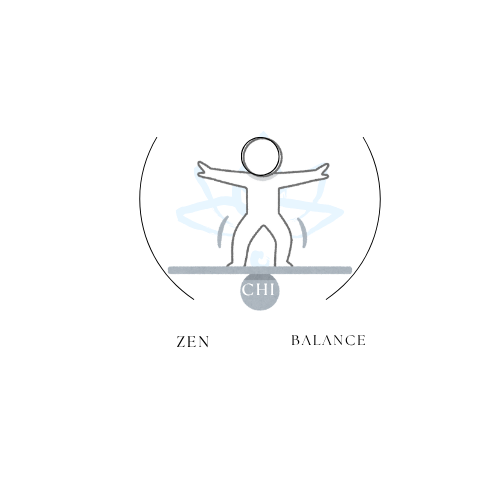
Holistic Wellness Fundamentals for Everyday Vitality
Share
Updated on: 2025-10-22
Table of Contents
- Did You Know? Holistic Wellness Insights
- Comparison: Pros & Cons of Holistic Wellness Approaches
- Buyer’s Checklist for Holistic Wellness Tools and Services
- Final Thoughts & Advice for Holistic Wellness
- Start a Holistic Wellness Plan on a Budget: Simple Steps
- Holistic Wellness Tips for Busy Professionals
- Holistic Wellness Routine for Stress Management at Home
- Holistic Wellness Q&A
- What is holistic wellness and why does it matter?
- How can I start a holistic wellness plan on a budget?
- What are simple mind-body wellness practices I can try?
Holistic wellness looks at the whole person—habits, environment, routines, and values—to support a balanced life. It fits within holistic health and often includes integrative wellness approaches that consider gentle practices for body and mind. If you are seeking practical, respectful guidance, this article offers clear steps to understand mind-body wellness, ideas for preventive health in everyday life, and suggestions that can be adapted to different budgets and schedules. The aim is to help you build a supportive routine that feels kind, realistic, and sustainable.
Did You Know? Holistic Wellness Insights
- Holistic wellness is not a single method. It is a flexible approach you can shape around your life, preferences, and goals.
- Integrative wellness prioritizes alignment across daily habits, such as sleep routines, movement, nourishing meals, and reflection.
- Mind-body wellness can be supported by simple practices like calm breathing, gentle stretching, and short moments of stillness.
- Preventive health often begins with everyday choices—consistent rest, hydration, and supportive routines can help set a stable foundation.
- Starting small may feel more comfortable than major changes. Tiny habits stacked into your day tend to be easier to maintain.
- A holistic wellness routine can be low-cost. Tools like a notebook, a reusable water bottle, or a timer can be enough to begin.
Comparison: Pros & Cons of Holistic Wellness Approaches
What Is Holistic Wellness and Why Does It Matter?
Holistic wellness is a whole-person perspective that considers your physical comfort, mental clarity, emotional steadiness, surroundings, and sense of purpose together. It matters because daily life is not one-dimensional. By seeing the full picture, you can choose gentle habits that work in harmony. Many people appreciate that holistic health invites personal choice and encourages small, steady improvements. Whether you are new to integrative wellness or refining a routine, this perspective may help you create balance without pressure.
Pros of Holistic Wellness
- Personalized pace: You can move gradually, set gentle goals, and adjust as you learn what supports your well-being.
- Flexible methods: Options include journaling, stretching, nature time, mindful breaks, or simple home routines.
- Budget-friendly entry: Many supportive habits cost little or nothing, which can make starting feel easier.
- Whole-person view: You can align sleep, movement, meals, and reflection in one coherent plan.
- Everyday fit: Simple practices can weave into short windows of time, which may suit busy schedules.
Potential Considerations
- Too many choices: With many paths, it can feel uncertain where to begin.
- Consistency takes patience: Routine building may require gentle reminders and time to settle.
- Information overload: It may help to limit inputs and focus on a few trustworthy, practical sources.
- Expectations: Keeping goals realistic and kind can support a more sustainable experience.
Buyer’s Checklist for Holistic Wellness Tools and Services
Before you invest in tools or services, this list may help you compare options with care and clarity.
- Clarity of purpose: Does the item or service match your current goal (sleep routine, mindful breaks, gentle movement)?
- Simplicity: Can you use it easily at home, with little setup or learning curve?
- Time fit: Can it slot into your schedule in five, ten, or fifteen-minute windows?
- Quality of guidance: Are instructions or resources clear, respectful, and easy to follow?
- Budget alignment: Is there a low-cost version or a trial so you can start small?
- Portability: If you travel or commute, can you bring it with you without fuss?
- Maintenance: Does it require minimal upkeep or subscriptions?
- Adaptability: Can it grow with you as your holistic wellness routine evolves?
- Values fit: Does it align with your preferences for materials, sustainability, or simplicity?
- Support: Is there accessible customer support if you have questions?
Final Thoughts & Advice for Holistic Wellness
Holistic wellness invites you to care for your whole self with patience and intention. You do not need to overhaul everything at once. A small, steady step—such as a five-minute breathing pause or a short stretch—can be a kind start. If you are curious to learn more about our approach to gentle, integrative wellness, you are welcome to visit Home for updated resources.
For questions or thoughtful guidance, you may wish to reach out through Contact. If you would like to understand the story and values that shape our perspective on holistic health, you can explore About. And if you prefer to review how information is treated, our Privacy Policy offers details for peace of mind.
The suggestions below are designed to be simple and adaptable. They reflect a gentle balance of mind-body wellness, preventive health habits, and practical routines that work at home or on the go.
Start a Holistic Wellness Plan on a Budget: Simple Steps
- Choose a kind focus. Pick one area—rest, hydration, movement, or reflection—to keep things clear and doable.
- Set a tiny time block. Begin with five minutes a day. Small steps can be easier to repeat.
- Use what you have. A notebook for tracking, a reusable bottle, a mat or towel, and a timer are often enough.
- Create a cue. Pair your new habit with something you already do, like morning coffee or an evening wind-down.
- Reflect weekly. Jot one or two observations. Keep what feels supportive; adjust what feels heavy.
- Grow gently. When the habit feels steady, add a minute or a second small practice.
Holistic Wellness Tips for Busy Professionals
- Buffer zones: Add a brief pause before and after meetings for a few calm breaths.
- Micro-movement: Stand, roll shoulders, or stretch for one minute every hour.
- Digital boundaries: Silence non-essential alerts during focused work.
- Desk nourishment: Keep water within reach and choose simple, steady snacks you enjoy.
- Transition rituals: A short end-of-day note to yourself can ease the shift from work to home.
Holistic Wellness Routine for Stress Management at Home
- Morning ease: A gentle stretch and two calm breaths before checking devices.
- Midday reset: Step outside for fresh air or look out a window for a natural focal point.
- Evening wind-down: Dim lights, tidy a small area, and note three things you appreciate.
- Sleep signals: Keep a regular bedtime and place your phone away from the bed if comfortable.
Holistic Wellness Q&A
What is holistic wellness and why does it matter?
Holistic wellness is a whole-person approach that weaves together daily habits for body, mind, and surroundings. It matters because your well-being is shaped by many small choices across the day. By aligning simple practices—rest, hydration, gentle movement, and reflection—you can create a steady rhythm that supports your life. This perspective also fits within integrative wellness and holistic health, so you can choose methods that feel respectful of your preferences and values.
How can I start a holistic wellness plan on a budget?
It may help to begin with one small goal and use items you already have. Set a five-minute daily window, pair it with an existing habit, and track brief reflections in a notebook. If you wish to add tools later, consider low-cost options such as a timer, a water bottle, or a simple mat. The step-by-step guide above offers a gentle path you can adjust over time.
What are simple mind-body wellness practices I can try?
Short breathing pauses, gentle stretching, and brief moments of quiet can be a thoughtful start. You might add a mindful sip of water, a short walk, or a gratitude note. These practices are adaptable and can be shaped to fit your schedule and comfort. Over time, they can become familiar anchors in a caring holistic wellness routine.

I'm a passionate curator at Zen Chi Balance, dedicated to spreading calm, harmony, and mindful living through faith-inspired lifestyle products. I help craft meaningful experiences for our global community of mindful shoppers.
The content provided is for informational and inspirational purposes only. It is intended to encourage personal growth, mindfulness, and balance in daily life. Zen Chi Balance does not provide medical, legal, or professional advice. For specific concerns or guidance, please consult a qualified professional. Visit us at www.zenchibalance.com for more inspiration and resources.
